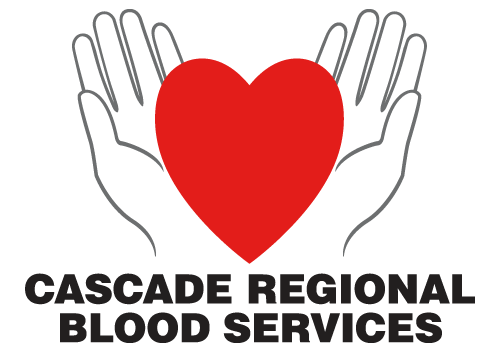Blood Sweat and Years:
Cascade Regional Blood Services Remarkable Run Draws to a Close
As it Passes the Life-Saving Torch in Pierce County
In 1946 the Pierce County Medical Society, recognizing the need for a reliable source of local blood supply for its community, partnered with the Pierce County Central Labor Council to form what was then known as the Tacoma-Pierce County Blood Bank (TPCBB). It was a visionary and landmark decision, as Tacoma and surrounding communities banded together to welcome their first local blood bank.
Over the 78 years that followed, that relationship grew stronger and deeper. So, did the blood bank’s geographic reach, ultimately leading it to rebrand in the mid-1990’s as Cascade Regional Blood Services – or “CRBS” as it is known today.
There have been a number of memorable milestones in CRBS’ 78-year history. Among the most notable was the blood bank’s expansion of fixed site operations from Tacoma to Puyallup, as well as to Federal Way and Gig Harbor.
Another was its embrace of automation. In the mid-1970’s, as demand for red blood cells, platelets and other blood products grew, the need for more sophistication in management of the blood supply also expanded. The blood center seized that opportunity by collaborating with a Tacoma-based software company which pioneered a blood donation and processing tracking computer application to streamline operations. The company would later go on to install the specialized software at many other centers nationwide.
The rollout of colorful mobile blood collection centers marked another key inflection point for Cascade. The familiar buses, which have traveled the streets of Pierce and South King County for years, helped dramatically raise community awareness of the need for donations. The strategy made giving more accessible and convenient.
Of course, as with any long journey, there were also significant challenges – particularly in recent years. One example has been the proliferation of screening procedures and tests now required to ensure that blood supply meets the highest standards of safety and quality. As viruses mutate and new variations appear, new testing protocols must be developed, often at considerable costs that have continued to escalate.
Like many communities nationwide that have been served for decades by smaller community blood banks like CRBS, decreasing collections in Pierce County driven by changing demographics – and an increase in institutional and patient needs – have outpaced the ability of legacy organizations to scale operations quickly enough to meet those demands. The agreement between MultiCare and Bloodworks Northwest, both larger entities, helps mitigate those challenges and ensures continuity of supply as demands increase.
Much has changed in the world of blood services since the inception of CRBS in 1946. What has not changed is the life-saving and heart-warming relationship between the donors who desire to help patients in need, and the industry professionals who recruit, collect and process their donations.
A change of this nature is difficult for all stakeholders, particularly the Cascade employees affected. Ours hearts and deep appreciation goes out to them for their tremendous dedication and efforts.
As stewards of a precious community resource that can only be manufactured by the human body, CRBS has always viewed its relationship with its donors as symbiotic. At the end of the day, it was about caring for individuals who needed the blood bank as much as it needed them.
Fortunately, that legacy of caring for Pierce County will live on as Bloodworks Northwest takes on CRBS’ former responsibilities of supplying the community through its new agreement with MultiCare Health System, which is why we need to roll up our sleeves and welcome Bloodworks Northwest.
Lives depend on it.
The Board of Directors, Cascade Regional Blood Services

